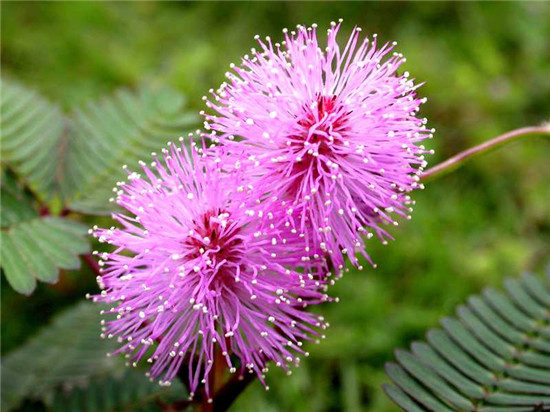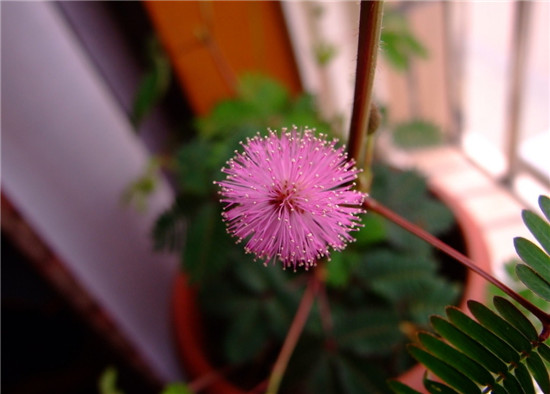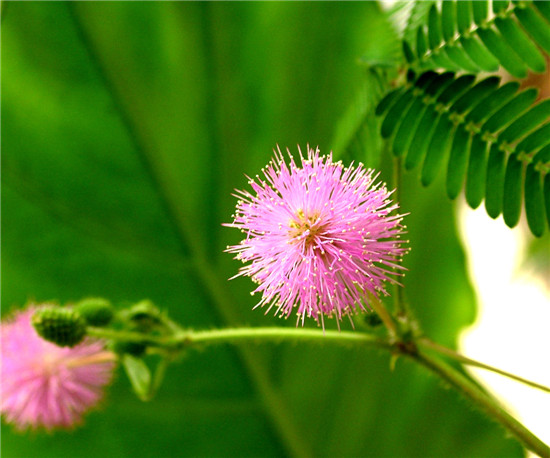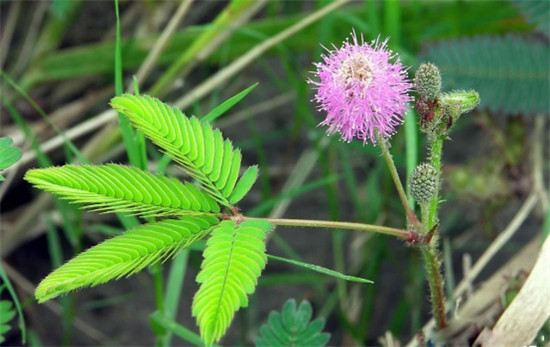The appearance and planting skills of mimosa
Mimosa is a lovely plant that shrinks its leaves as soon as it is touched. It is suitable for balcony and indoor potted flowers. Many people will also plant it in the courtyard. Let's take a look at the cultivation methods of mimosa.

Basic information about mimosa:
Mimosa is a perennial herb or subshrub of Leguminosae, which is named mimosa because its leaves respond to heat and light and close immediately when touched by external forces. Native to tropical South America, it likes to be warm and humid, and is not strict with the soil. The flower is pink, shaped like a fluffy ball, delightful.
Pods bear fruit after flowering, and the fruit is flat and round. The leaves are feathery and compound leaves are alternate and arranged in palms. The flowers, leaves and pods of mimosa have better ornamental effect, and are easy to survive, so they are suitable for balcony, indoor potted flowers, and can also be planted in the courtyard.
Mimosa is different from other plants. When touched by the outside world, the petiole is drooping and the small leaves are closed. This action is understood as "shy", so it is called mimosa, mimosa, and ugly grass.

Breeding method: potted plants. When you touch the leaves of mimosa, it will slowly close, very strange. And its flowers are like furry pink balls, especially lovely, because of the living habits of mimosa, it is a small plant suitable for potted plants.
Watering: because mimosa belongs to tropical plants and loves the humid environment very much, we should always keep the basin soil moist, and in summer we should water the basin soil according to the situation of the basin soil, about once a day. Do not let the soil dry, but also often spray water to the plants, and reduce the amount of water to prevent freezing damage in winter.
Fertilization: mimosa does not have high requirements for soil, general soil is fine, but if you want mimosa to grow better, you can choose loose and fertile soil, or use a mixture of rotten leaf soil and sandy soil. you can also use only rotten leaf soil, and humus soil is also a good choice.

Sunshine: mimosa likes sunshine, so putting it in a sunny place is very conducive to its growth, but if there is too little sunshine, it is not conducive to its growth.
Plants are different from animals. Plants have no nervous system and no muscles can not sense external stimuli, but why mimosa is shy has something to do with the nervous system. Mimosa is supported by tiny reticular actin, which falls off when closed, resulting in closed movement. Thigh actin contains muscle fibers, which is very rare in plants.
If touched, the leaves of mimosa will close immediately, the bigger the touch, the faster they close, and finally the whole leaves droop as if they are powerless. Mimosa leaves and petioles have a special structure, and there is a leaf pillow in the middle, which is the most sensitive to stimuli. Once it touches the stimulation, it directly spreads to the leaf pillow at the base of the petiole, causing the leaves to close.

The above is the whole content of the appearance and planting skills of mimosa that I have summarized for you. I hope this article can help you. Please continue to follow us.
Related
- Wuhan Hospital Iron Tree Blooming Result Was Instantly Frightened by the Gardener Master
- Which variety of camellia is the most fragrant and best? Which one do you like best?
- What is the small blue coat, the breeding methods and matters needing attention of the succulent plant
- Dormancy time and maintenance management of succulent plants during dormancy
- Minas succulent how to raise, Minas succulent plant pictures
- What are the varieties of winter succulent plants
- How to raise succulent plants in twelve rolls? let's take a look at some experience of breeding twelve rolls.
- Attention should be paid to water control for succulent plants during dormant period (winter and summer)
- Watering experience of twelve rolls of succulent plants
- Techniques for fertilizing succulent plants. An article will let you know how to fertilize succulent plants.



